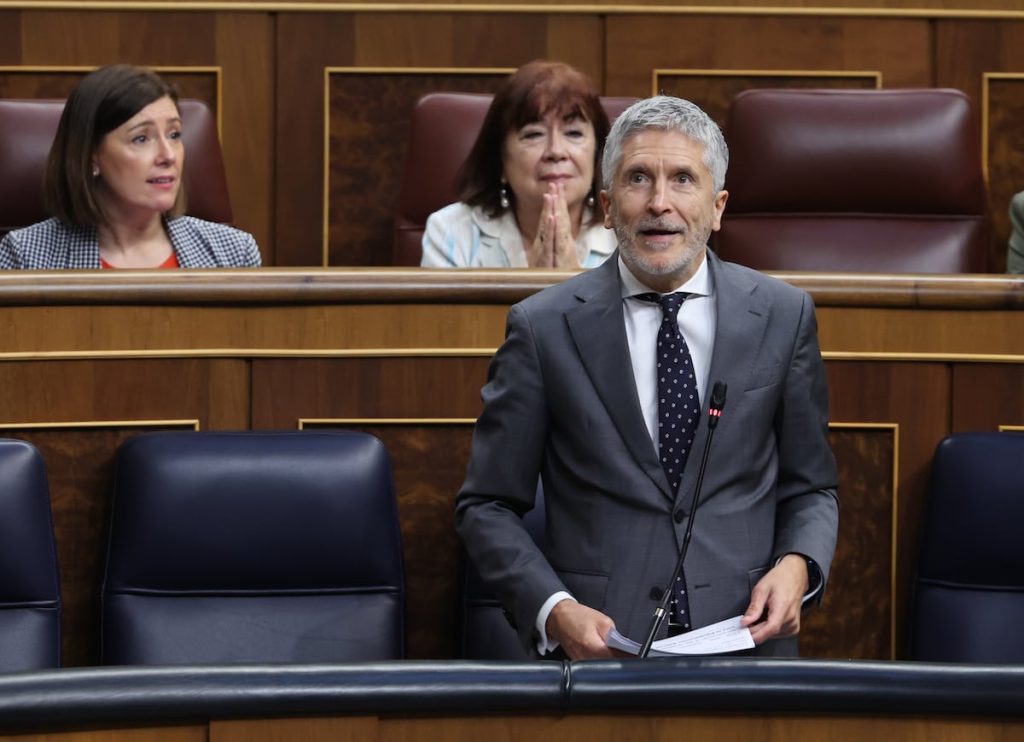The report sent by the Ministry of the Interior to Supreme Court judge Pablo Llarena on Tuesday holds the Mossos d’Esquadra responsible for the failed arrest of former President of the Generalitat of Catalonia, Carles Puigdemont, last Thursday when he appeared in Barcelona to give a speech. The Ministry highlighted that once Puigdemont’s intention to go to Barcelona was announced, supposedly to attend the investiture session of Socialist candidate Salvador Illa, the regional police informed the ministry of their plans for the specific operation to arrest Puigdemont once located. Interior offered collaboration from the National Police and Civil Guard, but they were not requested beyond the usual coordination and information exchange. The document also states that despite this, neither the National Police nor the Civil Guard initiated any parallel operations to arrest Puigdemont that day.
The report emphasizes that the Autonomous Statute grants the Mossos the competence and operational capabilities as the comprehensive police force in Catalonia for citizen security, judicial and criminal investigation, and administrative policing. However, once it was confirmed that Puigdemont had evaded the police operation set up by the Mossos near the Parliament to arrest him, the Ministry instructed the Police Chief and the Civil Guard Zone Chief in Catalonia to activate extraordinary operational and intelligence resources to locate and arrest the former President. Extra vigilance was set up at ports and airports in Catalonia, as well as controls on roads near the French border. Despite this, the main traffic routes remained under the responsibility of the regional police, and these operations continued until 24 hours from August 10.
The Ministry of the Interior’s report is in response to Judge Llarena’s request for explanations made to both the Ministry and the Mossos the day after the escape. With an active arrest warrant against Puigdemont, any security force had the obligation to detain him as soon as he entered Spanish territory. However, Puigdemont managed to enter the country and hold a public speech in front of 3,500 people without being arrested. The judge wanted to know about the initial plan approved for his detection at the border and subsequent arrest, the reasons for the technical police failure, and the orders given for his detection and eventual arrest after his escape. Interior stresses in its press release that Puigdemont’s arrest has been an operational goal for all police units since the warrant was issued in November 2017.
The Ministry also highlights the challenges posed by the Schengen Agreement, which allows for the free movement of people within its signatory countries, making it difficult to guarantee absolute impermeability at borders even with prior information or legal controls in place. Despite this, the National Police and Civil Guard’s surveillance efforts at the French border, ports, and airports did not detect Puigdemont. Interior explains to the judge that although the Schengen Agreement allows for temporary border controls in cases of serious threats to public order or internal security, this measure is considered exceptional and not justified for Puigdemont’s arrest. Interior’s report emphasizes that Spain did not meet the conditions to justify such measures.
In conclusion, the Ministry of the Interior’s report to Judge Llarena addresses the failed arrest of Carles Puigdemont by holding the Mossos d’Esquadra responsible for the botched operation. Despite collaboration offered by the National Police and Civil Guard, Puigdemont managed to evade arrest, prompting the Ministry to activate additional resources to locate him. The report also highlights the challenges posed by the Schengen Agreement in ensuring border security, and explains that the conditions for reinstating border controls were not met in this case. Overall, the report provides insight into the efforts made to detain Puigdemont and the limitations faced in a context of free movement within the Schengen Area.


